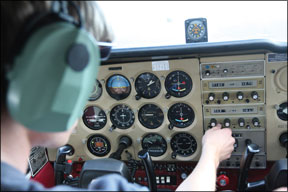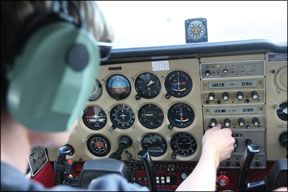I enjoyed Decembers article on tips to manage the workload of single pilot IFR flight (“Six SPIFR Tips”). One thing I think is often overlooked on this topic is the distinction between single-pilot and solo-pilot IFR operations.
I use my plane for business and Angel Flight operations in the northeast, which presents the opportunity and need for a considerable number of LIFR flights into Class B airports. On most occasions (obviously excepting Angel Flights), I fly not only SPIFR, but solo operations. My observation is, from a safety standpoint, I would rather fly solo in demanding conditions than with non-IFR rated passengers.

288
Why? Simply because inexperienced passengers can be distracting and unpredictable. When flying a SPIFR approach, one needs to find time for a passenger briefing amidst all the other approach chores. And even then, Ive come to expect the unexpected: passengers waving a hand in my face after breaking out to point out an airliner on parallel final as Im establishing my crosswind crab angle, reading back my landing clearance and keeping my speed below VLE.
Or, passengers slapping a death grip on my right knee in response to every bump on a gusty low minimums approach. How about children whose attention span gives out 30 minutes before ETA?
And of course, a pilots worst nightmare: passengers feeling physical distress, which adds a lingering distraction for the rest of any flight.
Often the reason we fly is to meet the needs of our passengers and, fortunately in most cases, this works out well for all of us. But truth be known, when I face the prospect of landing in 200-and-, Id rather do it on my own.
Len Sherman
Westport, Conn.
Interesting points. From our perspective, passengers can be both beneficial and harmful, often at the same time. Weve written about considerations involving pax in the past; look for us to tackle this topic again in an upcoming issue.
Stalling Around
In your December issue, the article “Air Work,” regarding the fatal crash of a Mooney while performing proficiency training, stated, “What we do know, however, is 1900 feet isnt enough to recover a high-performance single in its landing configuration from a fully developed stall.”
I dont own an M20F, but I do own an M20A, which has a very similar airframe and engine, and I practiced stalls in the landing configuration a week ago and recovered them in as little as 60 feet of altitude loss. My worst in the series was a 300-foot loss, and that was while under the hood with an instructor. I dont think any M20F owners would agree that 1900 feet are required to recover from a stall in an F model.
Did this stall perhaps turn into a spin? Now that would cost you altitude, but not a normal stall.
Dave Morris
via e-mail
Witnesses didnt report seeing the airplane spin. In this instance, our statement is more reflective of the altitude required to recover this airplane on this day with this crew instead of being a blanket applied to all similar aircraft. We regret the misunderstanding.
Rest Of The Story
I read with interest the account of being vectored by Indy Tracon when you were VFR and in Class E/G airspace, as Ive had similar experiences with other facilities. But, you left us hanging-you didnt tell us what you did. Did you comply, complain, cancel advisories or just plain disregard? Of course, one issue is FAR 91.123. Id be interested to hear the outcome, and your take on the applicability (or not) of this rule.
David Pulver
via e-mail
We politely declined the vectors. Youre referencing paragraph (b) of FAR 91.123, which states, “Except in an emergency, no person may operate an aircraft contrary to an ATC instruction in an area in which air traffic control is exercised.” The keys here are being VFR and outside Class B/C/D airspace. In such circumstances, ATC can suggest headings to fly, but unless the PIC requests otherwise, cannot vector us.




